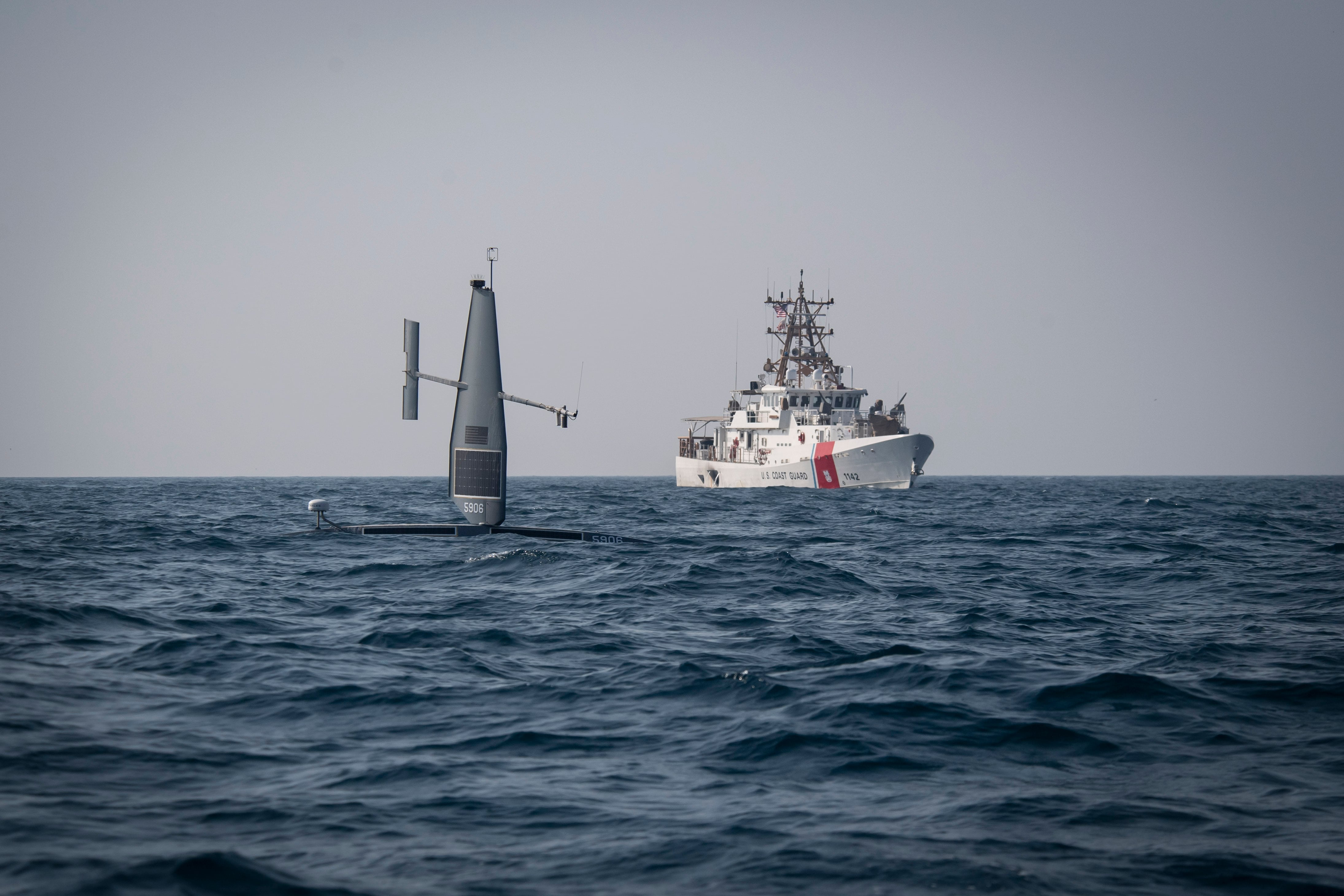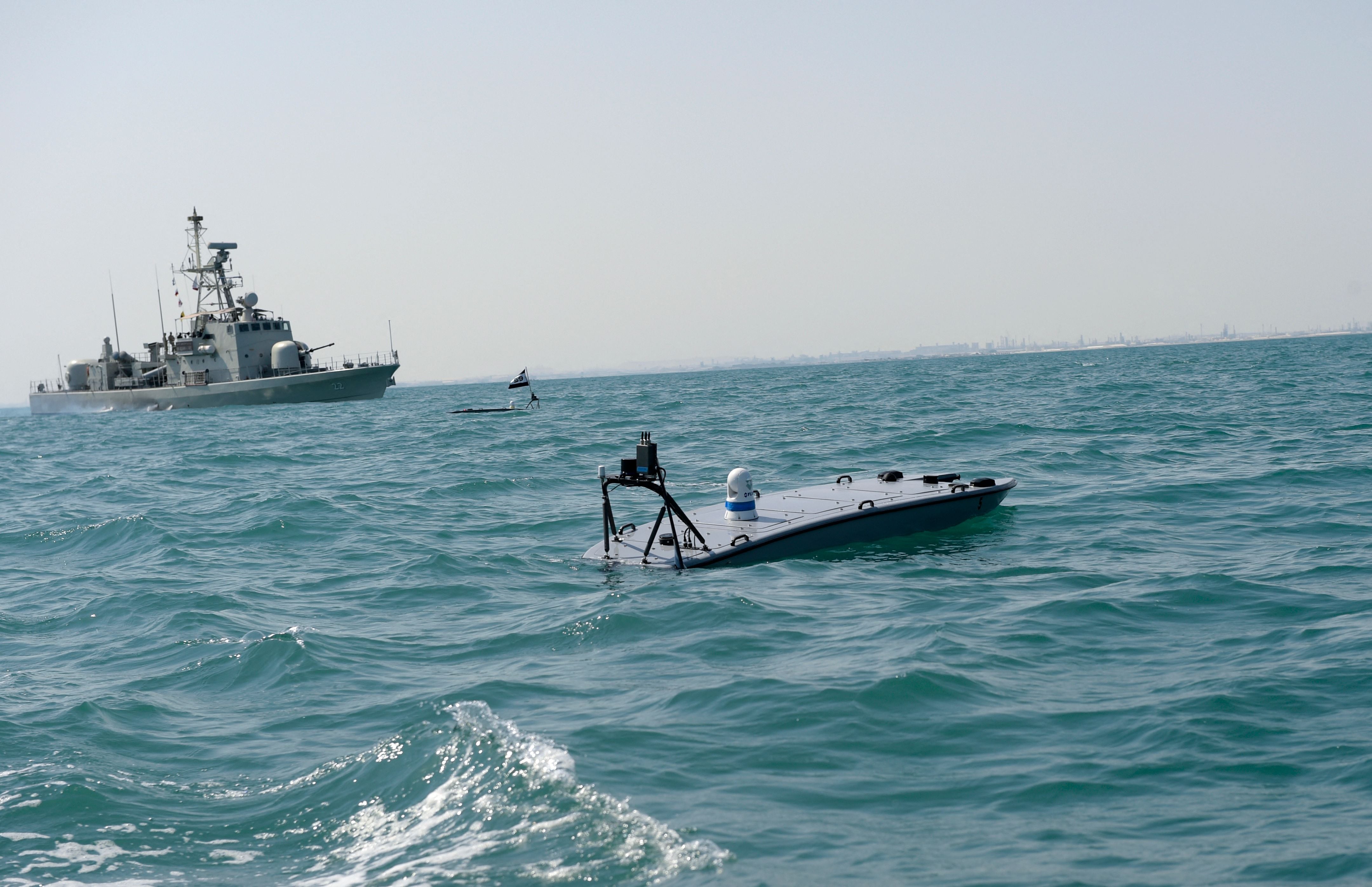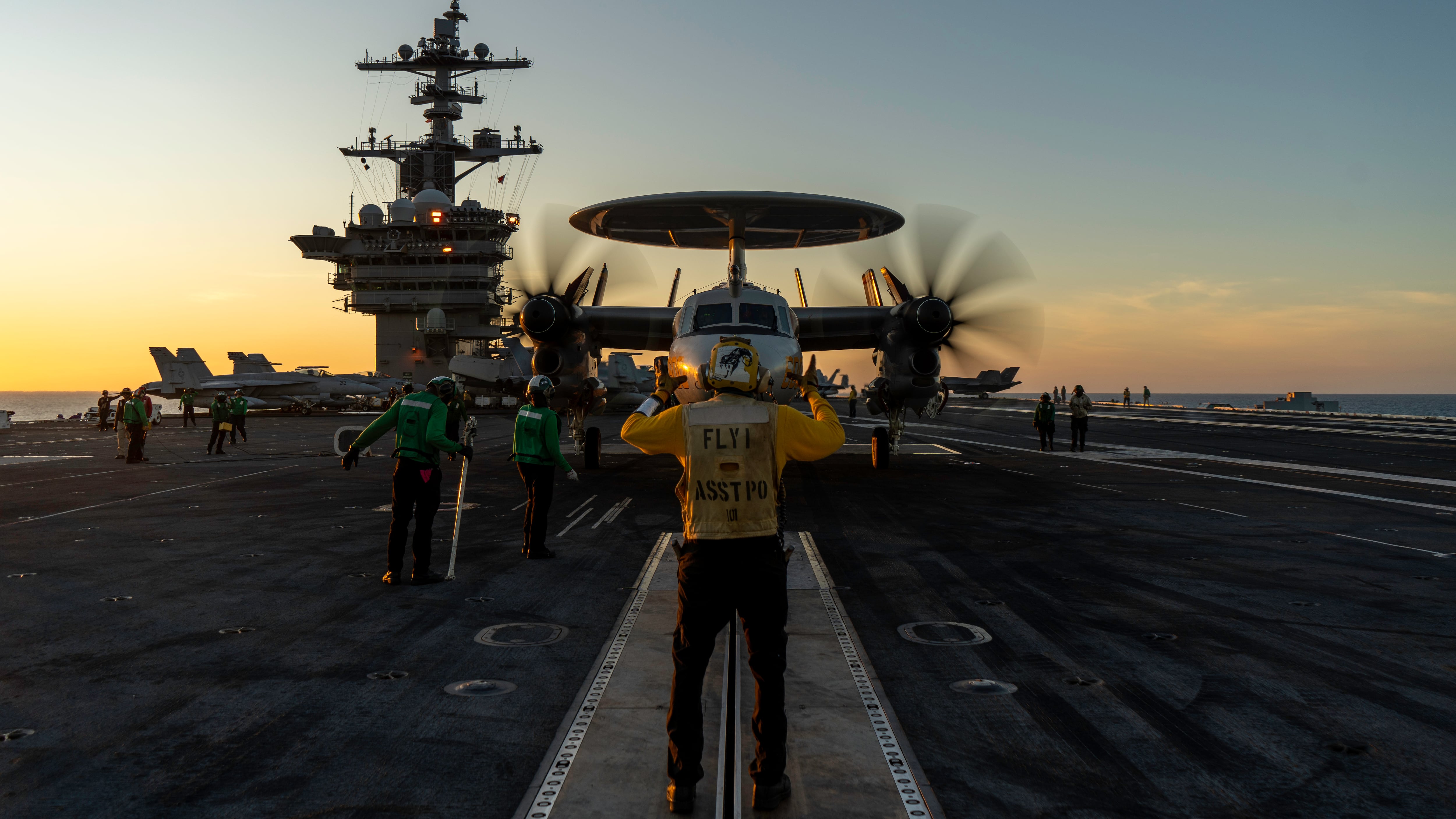A year-old Navy task group assigned to stress-test unmanned surface vessels in the forbidding heat of the Middle East is making breakthroughs — despite interference from hostile actors attempting to damage or nab the boats as they’re underway.
Earlier this spring, the test unit launched a handful of unmanned vessels from Aqaba, Jordan, into the Red Sea with a broad-edged surveillance mission: to observe the “pattern of life” in the region and increase maritime domain awareness.
These particular drone boats, however, were equipped with technology — the details of which the Navy is not disclosing — to allow them to navigate independently of GPS in the case of hostile efforts to disrupt or block signals from satellites.
The boats, which fit in the category of Small Unmanned Surface Vessel, or SUSV, meaning they’re less than 14 feet long, are stress-testing tech that may someday be used by the Navy wherever there is a threat of malicious disruption.
“There’s certain waterways here in Fifth Fleet that are GPS-contested — you can’t just transit there [with] a regular GPS, because the GPS will show you elsewhere, so your position is not accurate,” Lt. Luis Echeverria, commanding officer of the Navy’s Bahrain-based Task Group 59.1, told Military Times in an interview. “So, there is a payload embedded onto this small USV that allows for the USV to understand its actual position while it’s being jammed.”
Task Group 59.1, nicknamed “The Pioneers,” activated in January 2024 under Echeverria’s command. While the Navy’s Task Force 59, also located in Manama, Bahrain, has a broader mission focused on integrating unmanned systems and AI into surface operations, the task group zooms in on manned-unmanned teaming, and tests a variety of drone boat technologies for possible further development or employment.
That many of these technologies are commercial innovations and prototypes that the Navy hasn’t yet invested in means unit officials must be delicate about the details they disclose to avoid the appearance of endorsement.
The vessels deployed in the Red Sea, for example, are most likely variants of the Saildrone Voyager USV, a platform that has participated in Navy testing for several years.
“Saildrone’s innovative solution leverages multiple forms of localization, ensuring seamless operation without relying exclusively on satellite systems, and allowing operations to continue in contested environments,” company officials said in a March release highlighting the platform’s new GPS-denied technology.

Following the systems’ test deployment, Echeverria’s unit will develop an after-action report with insights into successes and failures and recommendations for the fleet. As the Navy continues to experiment toward the end of finding a meaningful and permanent place for unmanned vessels alongside and in concert with its manned ships, this task group aims to keep the service from investing in tech that’s not ready or can’t meet the mission.
When the unit first stood up it was tasked with deploying Seasats’ autonomous surface vessel Lightfish into the Red Sea with some untested deception capabilities, Echeverria told an audience earlier this year at the Surface Navy Association’s annual symposium.
“We failed. But that was fine, because there are good failures, and this was a good failure. We failed quickly,” Echeverria said. “We adapted, we iterated and we overcame.”
Later that year, with improvements and better established operating protocols, the vessel was able to sail for 17 days, covering 600 nautical miles and integrating its operations with manned ships in the region, he said.
Already, the task group, he said, has sent unmanned vessels it’s tested to the U.S. Fourth Fleet — the waters around central and South America — to be used in operations.
At the beginning of the year, Fourth Fleet announced the launch of “Operation Southern Spear,” which will deploy “long-dwell robotic surface vessels, small robotic interceptor boats and vertical take-off and landing robotic air vessels” to the region for maritime domain awareness and counternarcotics ops.
Experimenting in the Red Sea and other waters in the 5th Fleet area of operations does have its challenges. Echeverria cited the extreme heat as another stressor for test vessels. And in January, he acknowledged that, following the Oct. 7, 2023 Hamas attacks on Israel, the Navy had seen increased efforts by hostile actors to steal unmanned vessels launched by the service.
“We have been able to retain all of them,” he said.
In a March interview, Echeverria declined to say whether efforts to capture USVs in the Red Sea still continued.
An upcoming experiment in planning by Task Group 59.1 may soon make it easier and more practical for Navy commanders to employ unmanned vessels in concert with manned assets. The experiment, which involves flying drones, will employ them using JP-5, the Navy’s standard kerosene-based jet fuel, instead of other fuel variants including JP-4 and JP-8. This change eliminates the need for a waiver and reduces drag, Echeverria said.
“You can quickly deploy the asset where, in the past … you had to take precautionary measures on how you refuel the vessel or the system, so it just makes the process a little bit quicker,” he said.
Later this year, the task group will receive an advisor from the Navy’s newest rating: Robotics Warfare Specialist, a job created last year in concert with the Navy’s work to fast-track unmanned and robotic technology into the fleet.
Echeverria said the specialist will help the unit understand how to best employ the technology in its purview and match it to requirements coming from the Navy.
“I have a very skilled group of enlisted sailors that are eager to learn every single day and are eager to get these systems out there, because they understand that this is the future,” he said. “I’m really excited for what my team has been able to accomplish in such a small time frame … to the point where we’re seeing similar assets being utilized in other waterways, just based off of what we’ve learned out here.”




